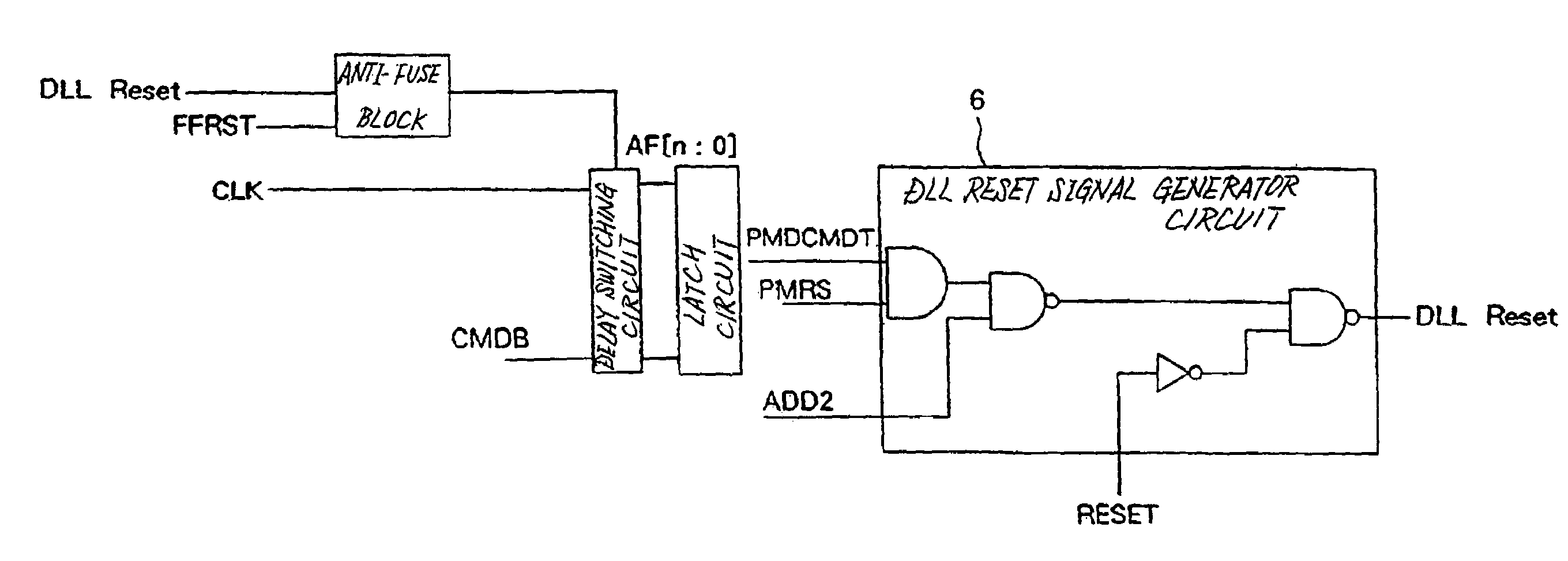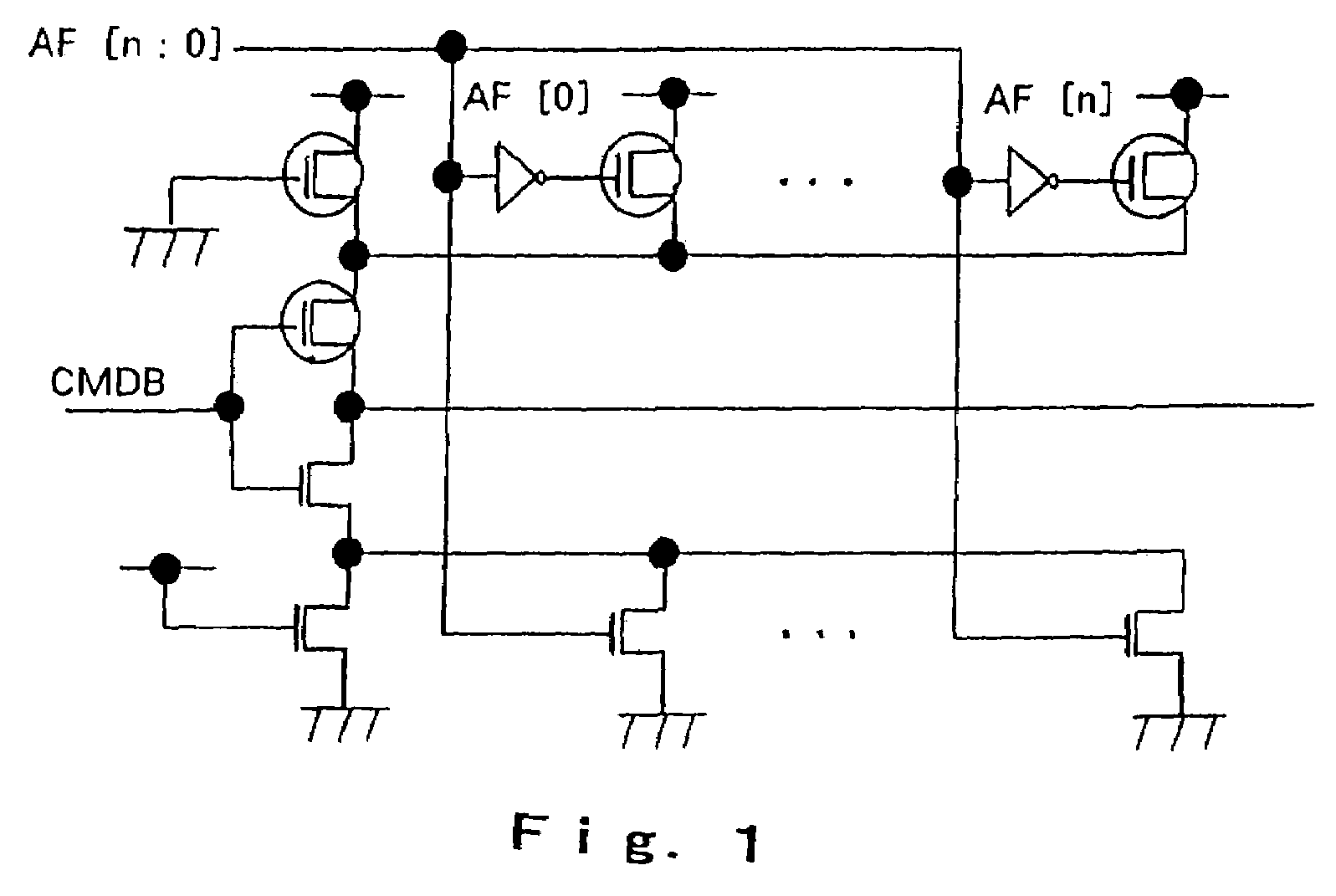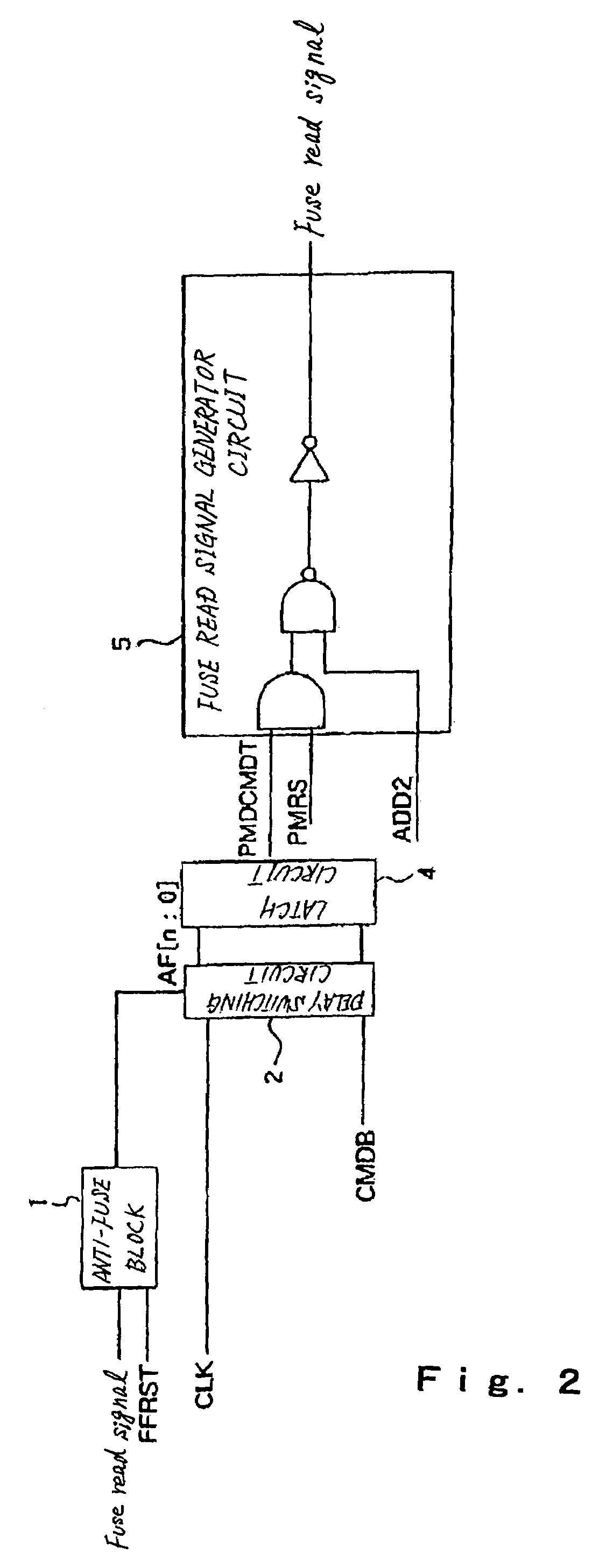Semiconductor memory device and method of adjusting same
a memory device and semiconductor technology, applied in the field of semiconductor memory devices, can solve the problems of limiting system processing speed, difficult to restrict the tis/tih of all products within, and failure to generate command signals under strict tis/tih conditions at high operating frequency
- Summary
- Abstract
- Description
- Claims
- Application Information
AI Technical Summary
Benefits of technology
Problems solved by technology
Method used
Image
Examples
Embodiment Construction
[0048]As illustrated in FIG. 7, an anti-fuse control circuit according to the present invention differs from the conventional anti-fuse control circuit illustrated in FIG. 1 in that a DLL reset signal generator circuit is substituted for Fuse read signal generator circuit 5. Since the remaining configuration and operation of the present invention are basically similar to the conventional anti-fuse control circuit, a description thereon is omitted.
[0049]As illustrated in FIG. 7, DLL reset signal generator circuit 6 included in the anti-fuse control circuit according to the present invention generates a DLL Reset signal based on a PMDCMDT signal supplied from a latch circuit, in a manner similar to conventional read signal generator circuit 5. In this event, DLL reset signal generator circuit 6 receives instructions, in accordance with the values of a PMRS signal and an ADD2 signal which are code signals, whether or not to deliver the DLL Reset signal.
[0050]Further, DLL reset signal g...
PUM
 Login to View More
Login to View More Abstract
Description
Claims
Application Information
 Login to View More
Login to View More - R&D
- Intellectual Property
- Life Sciences
- Materials
- Tech Scout
- Unparalleled Data Quality
- Higher Quality Content
- 60% Fewer Hallucinations
Browse by: Latest US Patents, China's latest patents, Technical Efficacy Thesaurus, Application Domain, Technology Topic, Popular Technical Reports.
© 2025 PatSnap. All rights reserved.Legal|Privacy policy|Modern Slavery Act Transparency Statement|Sitemap|About US| Contact US: help@patsnap.com



